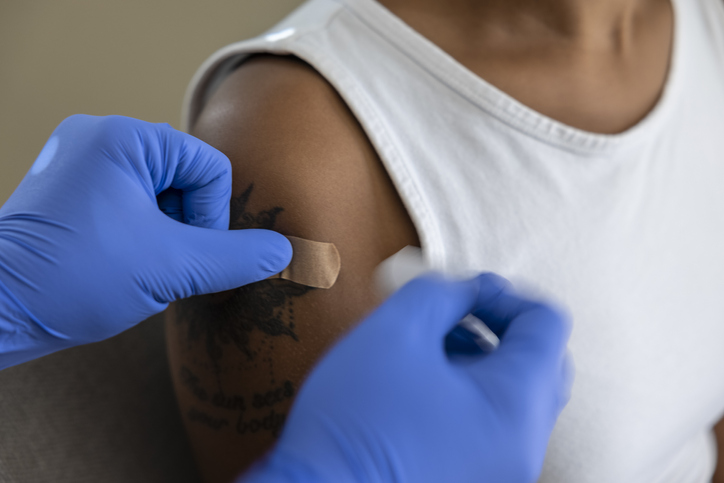
Source: LPETTET / Getty
When it comes to skepticism about the COVID-19 vaccine, Black folk have plenty of it. And for good reason. Given all of the medical malpractice that has and continues to go one when it comes to Black bodies, we have every right to be critical and distrusting of the medical community.
So today’s news about the pause of the Johnson and Johnson vaccine, the third one approved after Moderna and Pfizer, doesn’t breed more confidence in our communities.
According to The New York Times, the Food and Drug Administration, (FDA,) and the Centers for Disease Control (CDC) will stop using the Johnson and Johnson vaccine on federal sites. They’re also urging other states to do the same.
The Johnson and Johnson vaccine, unlike Moderna and Pfizer, is a single dose shot against the coronavirus. There are calls for the vaccine to be paused as six recipients of the Johnson and Johnson shot have developed a rare blood clot disorder within two weeks of receiving the shot.
All six of the people who developed the disorder were women between 18 and 48-years-old. One woman died as a result and another has been hospitalized and is in critical condition.
The NYT reports that 7 million people have received the Johnson and Johnson vaccine. And nine million more doses have been shipped to be distributed throughout the United States.
Dr. Peter Marks, director of the FDA, did acknowledge that six out of 7 million people is an extremely rare side effect. But they want to pause the vaccine to exercise “an abundance of caution.”
Since the federal government has issued this pause, Ohio, New York and Connecticut have done the same.
Up until now, the majority of vaccines being distributed in the U.S. come from Moderna and Pfizer, which have distributed 23 million doses of the vaccine. The advantages of the Johnson and Johnson vaccine were the fact that it only requires one dose and easier to ship and store. The other two require extremely low temperatures for storage. There have been no significant health concerns with the Moderna and Pfizer vaccines.


